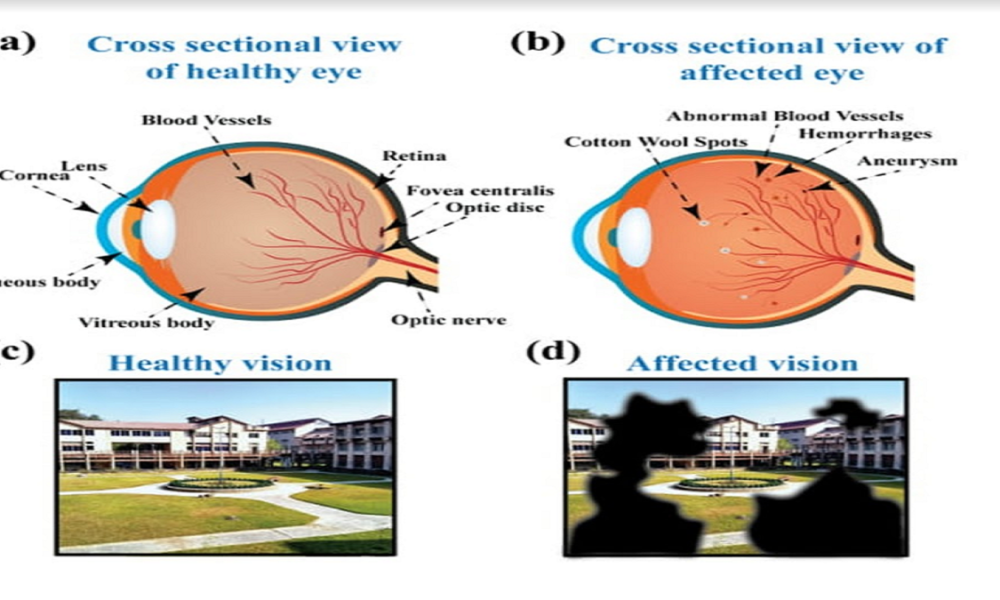The Indian Institute of Technology, Guwahati, in collaboration with Shri Sankaradeva Nethralaya, Guwahati, has developed a point-of-care testing device to detect diabetic retinopathy at an early stage, without invasive testing. The team was led by Dr Dipankar Bandyopadhyay, professor, Department of Chemical Engineering and Head of Centre for Nanotechnology, IIT Guwahati.
Diabetic retinopathy is a serious non-communicable disease caused by abnormal growth in the retinal blood vessels in people with diabetes. It usually gets worsened when the patient is on insulin for diabetic treatment. It is estimated that around 11-20 million Indians will suffer from this condition by 2025.
“Currently, the first step in the test for diabetic retinopathy is an invasive eye exam in which the eyes are dilated and the ophthalmologist inspects the eye. People who have had an eye examination know that this is inconvenient, with blurry vision for a long time after examination. Advanced detection methods such as optical coherence tomography, fluorescein angiography, detection of exudates in retina, and image analysis are complicated and require skilled operators and can show the malady only after it has progressed enough to be detected,” said Dr. Bandhopadhyay.
The IIT Guwahati team thought if there was a simple test — similar to a blood or urine test — that could detect retinopathy even before symptoms were seen in the eyes. This induced the researchers to look for appropriate biomarkers of retinopathy — chemicals that are found in body fluids — that can indicate impending or ongoing retinopathy. The team developed a device in which the sensing element was an antibody to B2M that was immobilised on gold particles a hundred thousand times smaller than the width of the human hair. When the nanogold-laden antibody came in contact with B2M, there was a colour change.
“We designed a microfluidic system, in which the body fluid — tear or urine — was drawn into very thin tubes or capillaries, where they came in contact with the gold-antibody nanoparticles, and the change in colour was assessed to detect B2M. Their prototype microfluidic analyser produced good results with reliable and sensitive detection of B2M, offering promise for design of hand-held, easy to operate detectors for diabetic retinopathy, much like the popular glucometers for diabetes itself. The researchers found that B2M, a protein found in tears and urine, is a reliable indicator for retinopathy. Armed with this knowledge, they set out to develop a device that can detect this protein in these body fluids,” Dr Bandhopadhyay explained.
The team has also filed an Indian patent for this idea and device. The research is funded by the HRD Ministry, Indian Council of Medical Research and Ministry of Electronics and Information Technology, GoI.























